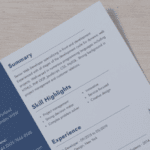- Profile Evaluation
- Countries
Beginner's Doubts
Study in USA
- Exams
- Finances
- Documents
Beginner's Doubts
Statement of Purpose (SOP)
Letter of Recommendation (LOR)
Other Documents
- Case Studies
Case Studies
- How Udit got an admit from University of Rochester With Rs. 28 Lakhs Scholarship
- 90th ranked to the 10th Ranked university in USA for MSBA - with $18,000 Dean scholarship - Anmol created history with Ace My Prep
- A distance learning BBA and just 1 year experience, no GMAT, was enough to get Vatsal into his dream school
- Journey of Jivika - 3 GPA fresher background, along with the Profile enhancement of Ace My Prep, got into the best Business and Brand Analytics universities of USA
- Journey of Anuj - From not getting any top 30 universities in his free shortlists to getting a direct admission to the 9th ranked university with a scholarship
- Journey of Sanchit - 48% in Bcom and the best MBA universities of the world. Is it Possible?
- Journey of Sahil - Mumbai University to Imperial College London
- Journey of Gowtham - From Loyola College, Chennai to London Business School
- Journey of Harsh - From a Bachelor's dropout to a 100,000$ scholarship in a Top 30 USA university
- Journey of Hitansu - Boston University MBA With $45,000 Scholarship
- acemyprep.com
- IELTS Overview
- IELTS Preparation Tips
IELTS Preparation Tips

Pragya Sharma ✅
Co-Founder @ Ace My Prep & Study Abroad Expert
- 57,182 Views

Preparing for your exam can be intimidating, and you may be unsure where to begin, which is why we’ve put up a list of helpful steps to get you going.
• Recognize the test format
You must know what to expect from the test format before you start practicing. Review the test’s content as well as the question and task categories for each part to become familiar with it.
Remember that the key to success in any exam, not only IELTS, is a thorough understanding of the test structure and format.
• Keep in mind the exam’s time limits
Make sure you practice under timed conditions so you can get used to the test’s speed.
Keep in mind that the IELTS test is timed, and you will only have the time allotted for each module.
All preparation done in a preparatory course’s sessions is done under the same paced constraints as the exam, so you’ll be prepared for the IELTS test’s pace.
• Concentrate on bettering your English skills
One of the most common blunders students make is concentrating solely on the IELTS exam. They take a lot of IELTS to practice exams, but they overlook the importance of improving their English.
• Listening to English while doing other works
The IELTS test is notoriously difficult, and the hearing module is no exception. You’ll have to answer 40 questions throughout four recordings. Only one time will the recordings be played.
As a result, knowing how to follow a discussion, even if you miss something, and how to recover so you can continue answering the next questions, is critical.
• Achieve a higher level of reading skills
The reading module’s sole objective is to assess a wide range of reading abilities. Reading for gist, major ideas, detail, skimming, understanding logical argument, and recognizing the authors’ viewpoints, attitudes, and intent.
Ensure being familiar with a range of questions so you can have a knack for them.
• Make sure to use acceptable and assertive language terminology
To ensure you are ready for the test, you should complete Task 1 questions using suitable terminology and practice with several types of charts (line graphs, bar charts, pie charts, tables, multiple data sources, processes, and diagrams).
Accustom yourself to the form of an essay, its composition, and its development for the Task 2 topic. You must be competent to use suitable English to link your concepts.
• In Direct communication, speak with fluency or coherence
- The final section adds to the test’s complexity. The examiner will also consider pronunciation, lexical resource, and fluency at this stage. You must take notes that will assist you in speaking for two minutes during the second section of the test.
- Expose yourself to as much language as possible. Read in English about topics that interest you; online periodicals or blogs are good places to start.
- Listen to native speakers conversing and, if feasible, join in. Make use of the shadowing method that entails repeating in English what someone has just stated. This technique will help with stress, intonation, and pronunciation.
- Remember that self-learning is achievable if you are dedicated and find someone who can provide you with feedback.
- Seek an institution that can advise you and provide advice if you are unwilling to commit.
- Make sure you have all of the necessary identification with you. Carry the same kind of identification that you used to apply for the test.
• Check the test location, date, and time again. Allow adequate time for travel to prevent being late.
• When the supervisor is delivering directions, pay attention and ask questions if you have any uncertainties.
• Because there is no negative marking, try to answer all of the questions. Make sure your responses are precise and relevant. Writing long paragraphs and sentences should be avoided.
Conclusion
We hope we have helped you get a clear set of tips to help you in taking the test. We wish you luck and hope you will clear the IELTS with flying colours.
The Pattern:-
Listening, Reading, writing, and speaking are the four parts of the IELTS exam pattern. These four sections are used for a candidate’s evaluation. IELTS Academic and IELTS General Training Test are two versions of the International English Language Testing System (IELTS). Candidates should examine the college/requirements university’s before preparing accordingly.
| Sections and Timings | Description | Maximum number of questions |
|---|---|---|
| Listening | (30 minutes) It comprises 4 monologues and talks that have been taped. | 40 |
| Reading | (60 minutes) Three lengthy reading portions with accompanying chores. Texts span from explanatory to factual to discursive, and non-verbal materials such as diagrams, graphs, and drawings are included in critical texts. the texts are genuine (taken from books, journals, and newspapers). | 40 |
| Writing | (60 minutes) A 150-word writing exercise in which the student must summarise, explain, or illustrate a table, graph, chart, or diagram, and a 250-word short essay challenge. | 2 |
| Speaking | (11-14 minutes) Short inquiries, the lengthy discourse of a familiar topic, and a planned discussion are all part of the face-to-face interview. | 3 |
The exam’s Reading, Listening, and Writing portions are all taken at the same time. The Speaking portion, on the other hand, can be tested on the same day or up to seven days before or after the other exams.
Conclusion
Preparing for your exam can be intimidating, and you may be unsure where to begin, which is why we’ve put up the basic exam format to get you going.
Test takers who are familiar with the IELTS structure will have an edge.
We can prepare, plan, and implement tactics more quickly if we have a fine-tune with the structure of the question paper. It is critical to comprehend the precise meaning of certain inquiries. Even academically mediocre students can improve their performance in almost all disciplines by understanding the question pattern.














